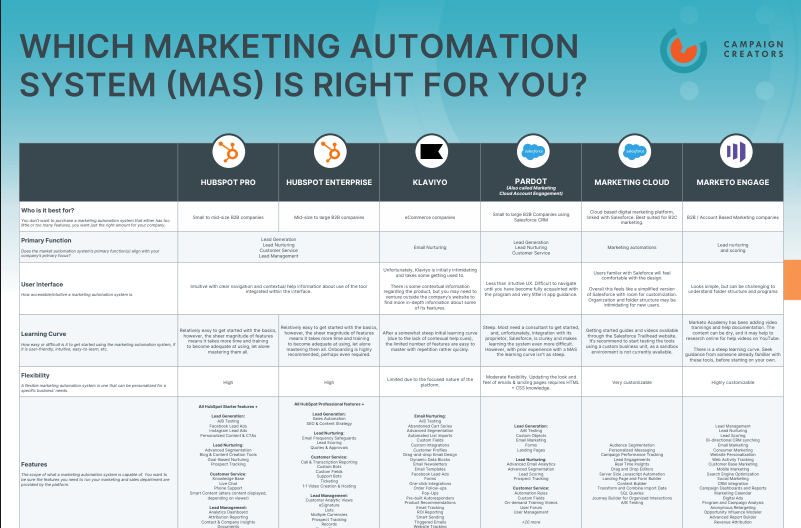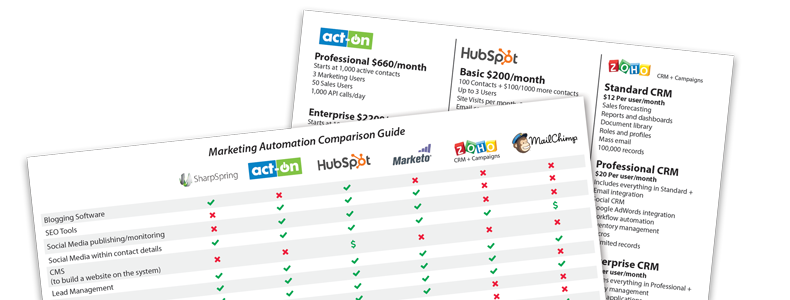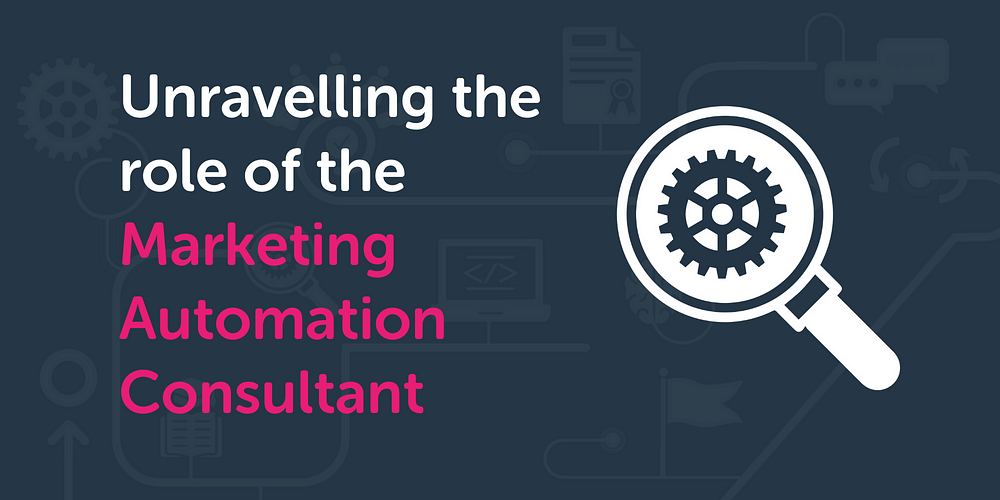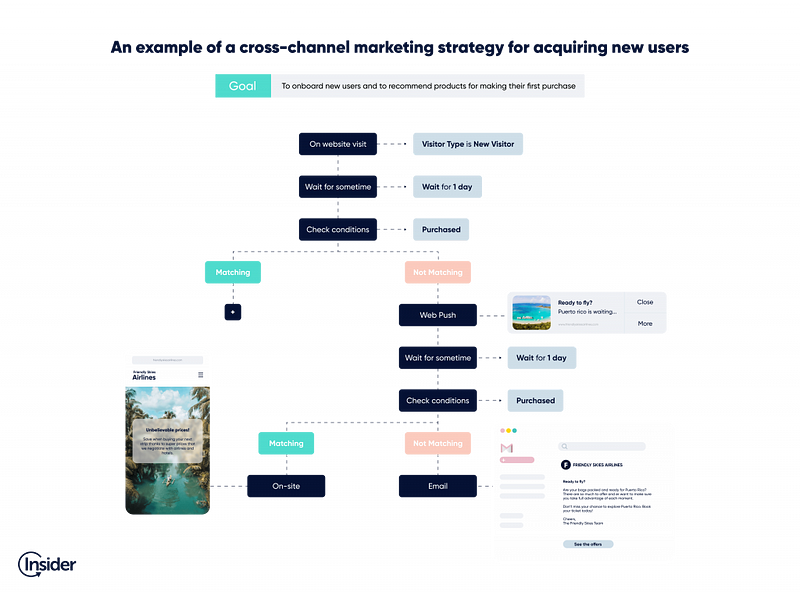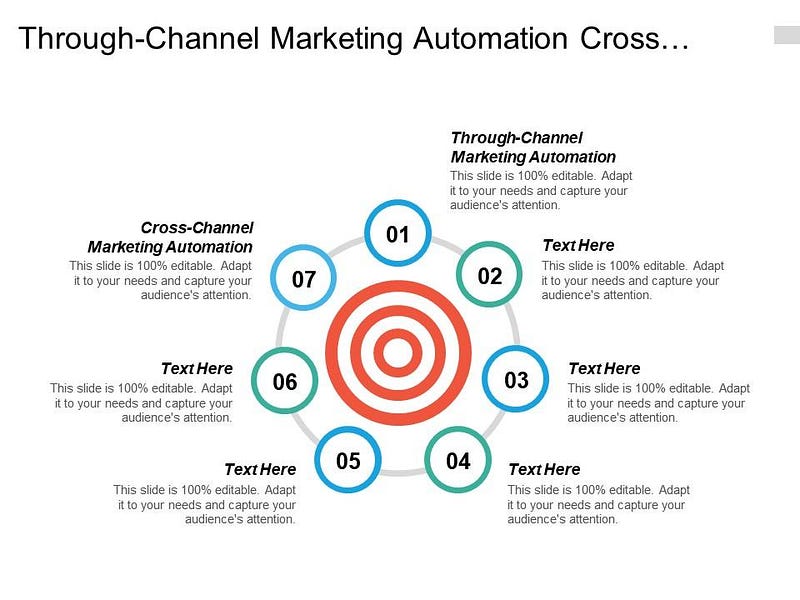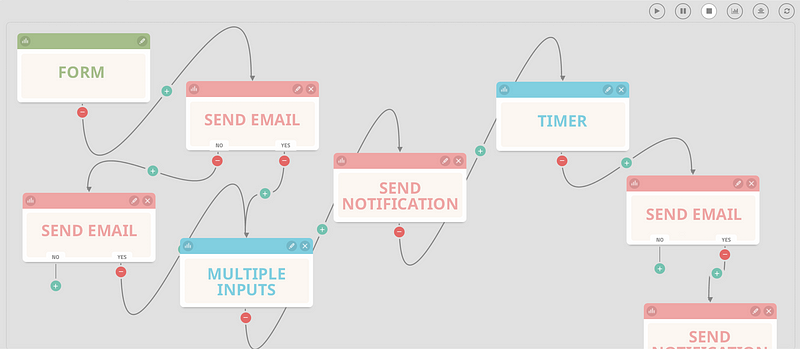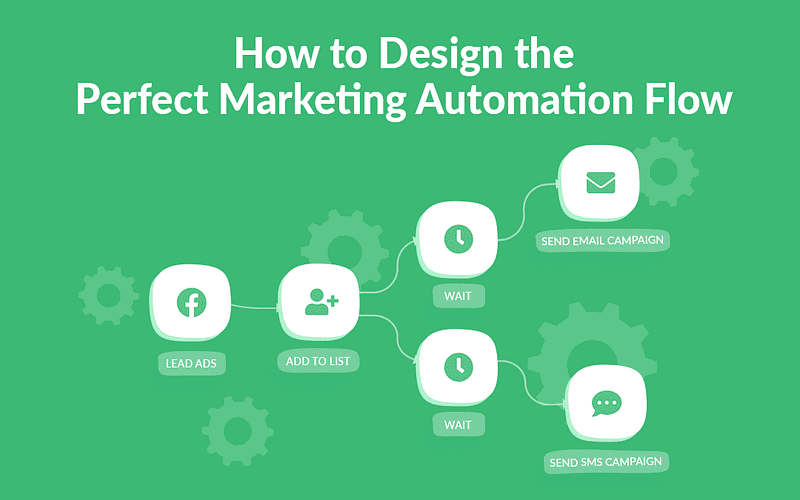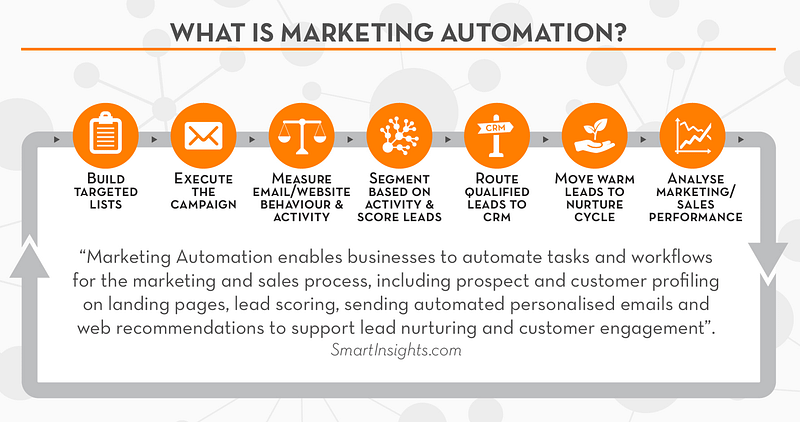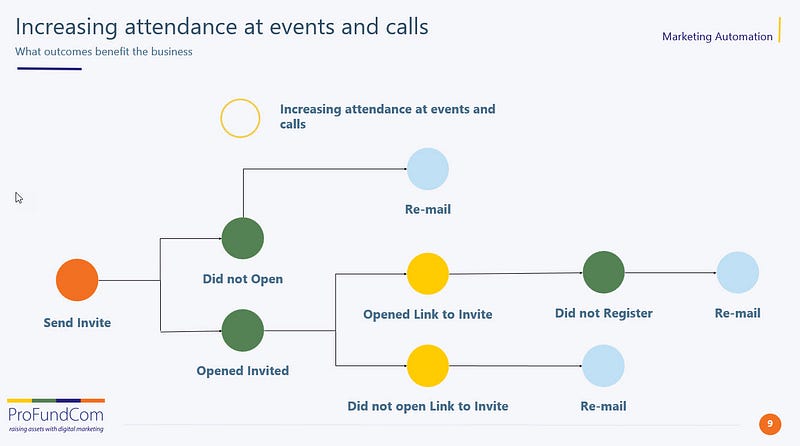Introduction
HubSpot’s marketing automation tools streamline your marketing efforts. They help nurture leads and improve customer engagement.
HubSpot’s marketing automation platform is essential for businesses aiming to scale. It offers a suite of tools that automate repetitive tasks, freeing up time for more strategic activities. With HubSpot, you can create personalized email campaigns, manage social media, and track customer interactions.
This platform also integrates with your CRM, ensuring a seamless workflow. Businesses can benefit from detailed analytics, helping them make data-driven decisions. HubSpot’s user-friendly interface makes it accessible for teams of all sizes. Overall, HubSpot’s marketing automation enhances efficiency and drives growth, making it a valuable asset for any marketing team.

Introduction To Marketing Automation
Marketing automation is changing the way businesses interact with customers. It simplifies tasks and improves efficiency. HubSpot offers a robust marketing automation platform. Let’s explore the basics and importance of marketing automation.
What Is Marketing Automation?
Marketing automation is the use of software to automate marketing actions. These actions include emails, social media, and other online tasks. Automation makes these tasks easier and faster.
HubSpot’s platform helps to manage and track marketing campaigns. It saves time and reduces manual work. This software can automate repetitive tasks and allows for more personalized communication.
Key Features of HubSpot’s Marketing Automation:
- Email marketing automation
- Lead nurturing workflows
- Social media scheduling
- Analytics and reporting
Importance For Business Growth
Marketing automation is crucial for business growth. It helps in targeting the right audience. Personalized messages lead to better engagement. Automated processes ensure timely communication.
Benefits of Marketing Automation for Businesses:
Benefit Description Efficiency Automates repetitive tasks and saves time. Personalization Enables personalized communication with customers. Tracking Provides detailed analytics and reporting. Growth Leads to better engagement and increased sales.
Businesses can focus on strategy rather than manual tasks. HubSpot’s tools provide insights into customer behavior. This data helps in making informed decisions.
- Identify repetitive tasks in your marketing process.
- Choose a marketing automation platform like HubSpot.
- Set up workflows and automation rules.
- Monitor performance and adjust as needed.
HubSpot’s marketing automation is easy to use. It helps businesses grow and succeed. Start using marketing automation today for better results.
Why Choose Hubspot?
HubSpot is a leading marketing automation platform. It offers a comprehensive suite of tools. These tools help businesses grow efficiently. Below, we explore why you should choose HubSpot.
Key Features Of Hubspot
HubSpot provides various features to streamline your marketing efforts. Here are some key features:
- Email Marketing: Design and send personalized emails.
- CRM Integration: Seamlessly connect with your CRM system.
- Social Media Management: Schedule and manage posts easily.
- Analytics and Reporting: Get detailed insights into your campaigns.
- Lead Management: Track and manage your leads efficiently.
Benefits Of Using Hubspot
Using HubSpot offers numerous benefits for your business:
- Increased Efficiency: Automate repetitive tasks.
- Better Lead Management: Nurture leads with ease.
- Enhanced Analytics: Access detailed performance data.
- Improved Customer Engagement: Personalize your interactions.
- Cost-Effective: Get more value for your money.
Feature Benefit CRM Integration Seamless data management Social Media Management Better online presence Email Marketing Personalized communication Analytics and Reporting Data-driven decisions
Setting Up Hubspot
Setting up HubSpot for marketing automation can transform your business. This guide will help you configure HubSpot and integrate it with your existing systems. Let’s dive into the setup process.
Initial Configuration
First, log in to your HubSpot account. Navigate to the settings page. Here, you will find all the necessary tools to get started.
Follow these steps to complete the initial configuration:
- Set Up Your Profile: Add your business name and contact details.
- Configure Email Settings: Set up your email signature and preferences.
- Customize Your Dashboard: Choose the metrics you want to track.
Next, create user accounts for your team. Assign roles and permissions to ensure everyone has the access they need. This step is crucial for collaboration and security.
Don’t forget to set up your CRM. Import your contacts and organize them into lists. This will help you manage your leads and customers more effectively.
Integrating With Existing Systems
HubSpot can connect with many of your existing systems. This integration ensures seamless data flow and improves efficiency.
Here are some common systems to integrate with HubSpot:
- Email Marketing Tools: Sync your existing email lists with HubSpot.
- CRM Systems: Connect your current CRM to HubSpot for better data management.
- Social Media Platforms: Integrate your social accounts to manage posts and track engagement.
To integrate these systems, navigate to the integrations settings in HubSpot. Select the system you want to connect. Follow the on-screen instructions to complete the integration.
Here is a table summarizing the common integrations:
System Purpose Integration Steps Email Marketing Tools Sync email lists Navigate to integrations, select tool, follow instructions CRM Systems Data management Navigate to integrations, select CRM, follow instructions Social Media Platforms Manage posts, track engagement Navigate to integrations, select platform, follow instructions
By following these steps, you will set up HubSpot efficiently. This foundation will allow you to leverage HubSpot’s powerful marketing automation tools.
Lead Management
Lead management is a crucial part of the marketing process. It involves capturing, tracking, and nurturing leads. HubSpot’s marketing automation tools excel in this area. They streamline the process and enhance efficiency.
Capturing Leads
Capturing leads is the first step in lead management. HubSpot offers various tools to help with this. You can use forms, landing pages, and chatbots.
Forms are simple to create with HubSpot’s drag-and-drop builder. They can be customized to fit your needs. Place them on your website to collect information from visitors.
Landing pages are another effective tool. HubSpot’s templates make it easy to build them. You can use landing pages to capture leads from specific campaigns.
Chatbots are great for engaging visitors in real-time. They can answer questions and capture lead information. HubSpot’s chatbots are easy to set up and customize.
Tool Function Forms Collect visitor information Landing Pages Capture leads from campaigns Chatbots Engage visitors in real-time
Nurturing Leads
Nurturing leads is just as important as capturing them. HubSpot provides several tools for this task. You can use email marketing, workflows, and lead scoring.
Email marketing is a powerful way to nurture leads. HubSpot’s email tool makes it easy. You can create personalized emails and send them automatically.
Workflows help automate your nurturing process. You can set up workflows to send emails based on specific actions. This ensures leads receive the right message at the right time.
Lead scoring helps prioritize your efforts. HubSpot allows you to assign scores based on lead behavior. High-scoring leads can be targeted for more intensive nurturing.
- Email Marketing: Create personalized, automated emails.
- Workflows: Automate your nurturing process.
- Lead Scoring: Prioritize leads based on behavior.
Email Marketing With Hubspot
Email marketing is a powerful tool for businesses. HubSpot makes it even better. With HubSpot, you can create, personalize, and optimize your email campaigns. This helps you reach your audience effectively and drive engagement.
Creating Email Campaigns
Creating an email campaign with HubSpot is simple. You don’t need coding skills. The platform offers a drag-and-drop editor. This allows you to design visually appealing emails easily.
Here are the steps to create an email campaign:
- Login to your HubSpot account.
- Navigate to the Marketing section.
- Select “Email” from the dropdown menu.
- Click on “Create Email”.
- Choose a template or start from scratch.
- Use the drag-and-drop editor to design your email.
- Add your content and images.
- Preview your email to ensure it looks perfect.
- Schedule or send your email immediately.
Personalizing Email Content
Personalized emails perform better. HubSpot allows you to tailor your emails for each recipient. You can use personalization tokens. These tokens insert specific details for each contact, such as their name or company.
Personalizing your email content involves:
- Using the recipient’s name in the greeting.
- Segmenting your audience based on their interests.
- Sending tailored content relevant to each segment.
- Incorporating dynamic content that changes based on the recipient’s profile.
Here’s an example of how to use personalization tokens in your email:
Hi {{ contact.first_name }},
We have some exciting news for you at {{ contact.company }}!
Best,
[Your Company]HubSpot makes it easy to create and personalize email campaigns. This improves engagement and drives better results.
Social Media Automation
Social media automation is a powerful feature in HubSpot’s marketing automation suite. It simplifies social media management by allowing users to automate repetitive tasks. This includes scheduling posts and monitoring engagement. By leveraging these tools, marketers can save time and focus on creating high-quality content.
Scheduling Posts
One of the key features of HubSpot’s social media automation is scheduling posts. This feature allows you to plan your content in advance. You can schedule posts for multiple social media platforms from one interface. This helps maintain a consistent presence without manual effort.
HubSpot’s scheduling tool offers a calendar view. This makes it easy to see your planned posts for the week or month. You can drag and drop posts to reschedule them. This flexibility ensures that your content aligns with your marketing strategy.
Here is a quick comparison of scheduling features:
Feature Benefit Multi-Platform Scheduling Manage posts for various social media channels in one place. Calendar View Visualize and organize your content schedule easily. Drag and Drop Quickly adjust your posting schedule.
Monitoring Engagement
Monitoring engagement is essential for social media success. HubSpot’s social media automation offers robust tools for this purpose. You can track likes, comments, shares, and more. These metrics help you understand how your audience interacts with your content.
The platform provides detailed reports on engagement. This data allows you to refine your social media strategy. You can identify which posts perform best and why. Use this information to create more engaging content.
Key metrics tracked by HubSpot include:
- Likes: Measure the popularity of your posts.
- Comments: Gauge audience interaction and feedback.
- Shares: See how often your content is shared.
- Clicks: Track the effectiveness of your calls-to-action.
These insights are crucial for optimizing your social media efforts. With HubSpot, you can automate and analyze your social media strategy effectively.
Analytics And Reporting
Marketing Automation HubSpot offers powerful analytics and reporting tools. These tools help businesses track performance and generate detailed reports. This section explores how HubSpot’s analytics can boost marketing efforts.
Tracking Performance
HubSpot makes tracking performance easy. You can monitor key metrics. These include click-through rates, conversion rates, and engagement levels. The platform offers a user-friendly dashboard. This dashboard provides real-time data. This helps in making quick decisions.
HubSpot allows you to set up custom tracking. This helps tailor reports to specific business needs. You can track the performance of individual campaigns. This includes email marketing, social media, and content marketing.
HubSpot’s tracking features also support A/B testing. This lets you compare different strategies. You can see what works best for your audience. All this data helps optimize your marketing efforts.
Generating Reports
HubSpot makes generating reports simple and efficient. You can create customized reports. These reports highlight the most important metrics. HubSpot offers various report templates. These templates save time and ensure consistency.
HubSpot allows you to generate reports on campaign performance. This includes open rates, click rates, and conversion rates. You can also report on website analytics. This includes page views, session duration, and bounce rates.
HubSpot’s reporting tools support data segmentation. This feature helps break down data by different criteria. You can segment by demographics, behavior, and campaign type. This helps in understanding different audience segments better.
Metric Description Click-Through Rate (CTR) Percentage of clicks on a link or ad. Conversion Rate Percentage of visitors who take a desired action. Engagement Rate Level of user interaction with content.
HubSpot also supports scheduled reporting. This feature automates the delivery of reports. You can set reports to be sent daily, weekly, or monthly. This ensures stakeholders are always informed.

Best Practices
HubSpot offers powerful tools for marketing automation. To get the most out of these tools, follow some best practices. Below, we will explore key strategies for maximizing ROI and avoiding common pitfalls.
Maximizing Roi
Maximizing your return on investment (ROI) with HubSpot involves several steps. Here are some essential tips:
- Segment Your Audience: Tailor your messages to different audience groups. Use demographic and behavioral data for better targeting.
- Create Personalized Content: Personalize emails and content to engage your audience better. Use their names, preferences, and past behavior.
- A/B Testing: Test different versions of your emails and landing pages. Find out what works best and optimize accordingly.
- Automate Follow-ups: Set up automated follow-ups for leads and customers. Keep them engaged without manual effort.
- Track Performance: Use HubSpot’s analytics to monitor your campaigns. Adjust strategies based on real-time data.
Avoiding Common Pitfalls
Avoiding common pitfalls is crucial for a successful marketing automation strategy. Here are some tips to keep in mind:
- Don’t Over-Automate: Automate wisely. Too much automation can feel impersonal and alienate your audience.
- Maintain Data Quality: Keep your database clean. Regularly update and verify contact information.
- Set Realistic Goals: Set achievable goals for your campaigns. Unrealistic expectations can lead to disappointment.
- Monitor Compliance: Ensure your campaigns comply with data protection laws. Avoid potential legal issues.
- Continuous Learning: Stay updated with the latest trends and features. HubSpot regularly updates its tools, so keep learning.
Best Practice Benefit Segment Your Audience Improved targeting and engagement Create Personalized Content Higher engagement and conversion rates Automate Follow-ups Efficient lead nurturing Maintain Data Quality Accurate and reliable insights Monitor Compliance Avoid legal complications
Case Studies
Marketing Automation with HubSpot has transformed businesses worldwide. This section explores real-life Case Studies that highlight its effectiveness. Learn from these examples to see how HubSpot can boost your marketing efforts.
Success Stories
Many companies have achieved remarkable success using HubSpot’s Marketing Automation. Here are some inspiring stories:
- Company A
- Company A saw a 50% increase in lead generation. They used personalized email campaigns and automated workflows. This led to more sales and higher customer engagement.
- Company B
- Company B improved their marketing ROI by 60%. They used HubSpot’s analytics tools. This helped them identify and focus on the most effective strategies.
- Company C
- Company C reduced their marketing costs by 40%. They automated repetitive tasks. This allowed their team to focus on creative and strategic initiatives.
Lessons Learned
Each case study provides valuable lessons. Here are some key takeaways:
Lesson Details Personalization Personalized content increases engagement and conversion rates. Data-Driven Decisions Use analytics to guide your marketing strategies for better results. Automation Automate repetitive tasks to save time and reduce errors. Continuous Improvement Always test and refine your campaigns for optimal performance.
These lessons highlight the power of HubSpot’s Marketing Automation. Implement these strategies to maximize your marketing efficiency.
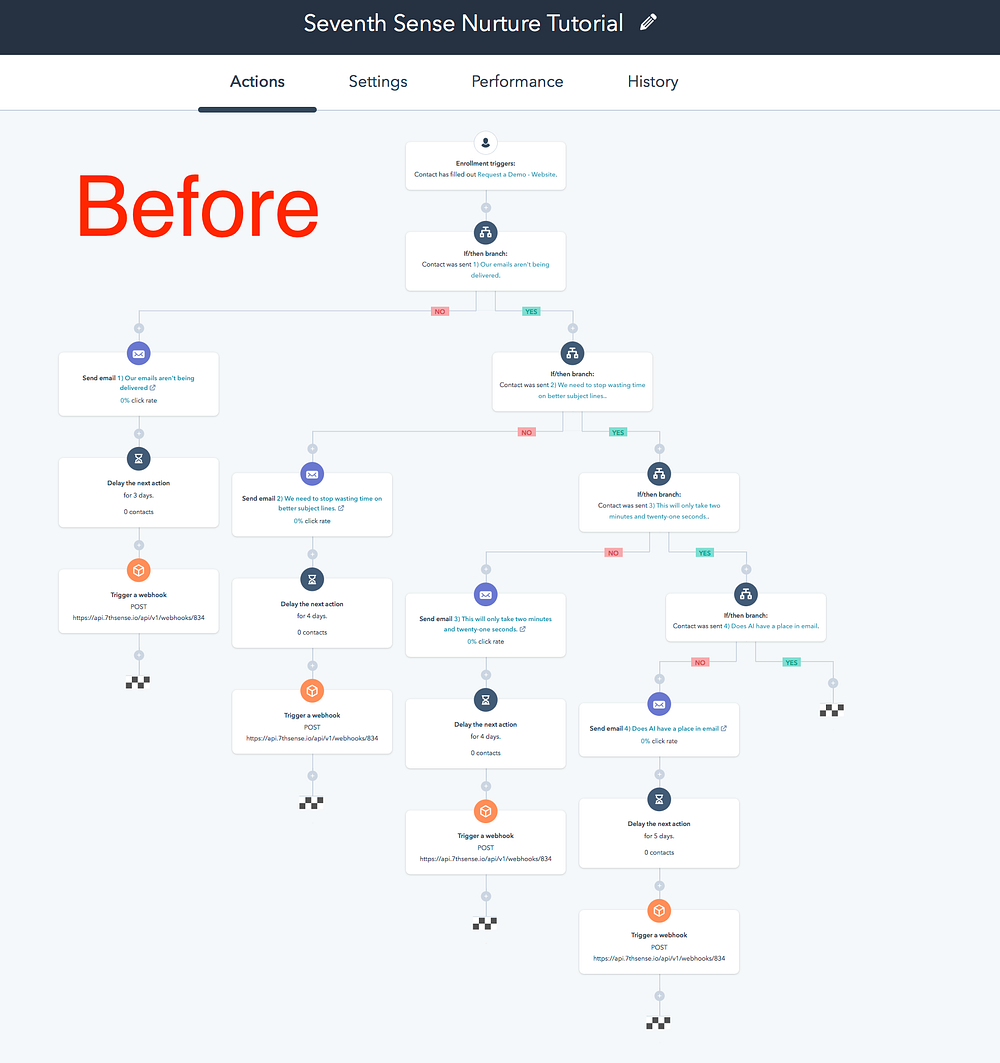
Future Trends
The world of marketing automation is rapidly evolving. New trends and technologies are shaping the way we engage with customers. HubSpot, a leading platform in this space, is at the forefront of these changes. Let’s delve into some future trends.
Emerging Technologies
Several emerging technologies are set to revolutionize marketing automation. Artificial Intelligence (AI) and Machine Learning (ML) are key players. They enhance personalization and improve customer targeting. AI can analyze vast amounts of data quickly. This leads to more accurate customer insights.
Chatbots are another exciting development. They provide instant responses to customer queries. This improves user experience and increases engagement. Voice search is also gaining traction. Marketers need to optimize content for voice queries.
Here’s a table summarizing these technologies:
Technology Impact Artificial Intelligence Improved personalization and targeting Chatbots Instant customer responses Voice Search Content optimization for voice queries
Predictions For Marketing Automation
Marketing automation will continue to evolve. Here are some predictions:
- Increased Use of AI: AI will become more integral to marketing strategies. It will drive personalization and customer insights.
- Omni-channel Marketing: Marketers will focus on delivering a unified experience across all channels.
- Data Privacy: Stricter regulations will emerge. Marketers must prioritize data security.
- Hyper-Personalization: Customers will expect highly personalized experiences. AI and ML will play a crucial role here.
These trends highlight the dynamic nature of marketing automation. Staying updated is crucial for success.
Frequently Asked Questions
What Is Hubspot Marketing Automation?
HubSpot marketing automation streamlines marketing tasks like email campaigns, social media posting, and lead nurturing. It helps businesses save time, boost efficiency, and improve customer engagement through automated workflows.
How Does Hubspot Improve Lead Generation?
HubSpot improves lead generation by offering tools like landing pages, forms, and CTAs. These tools capture and nurture leads efficiently, increasing conversion rates and sales opportunities.
Can Hubspot Automate Social Media?
Yes, HubSpot can automate social media posts across multiple platforms. Scheduling and publishing posts in advance saves time and ensures consistent engagement with your audience.
Is Hubspot Suitable For Small Businesses?
HubSpot is suitable for small businesses due to its scalability and user-friendly interface. It offers affordable plans and essential features to help small businesses grow and manage their marketing efforts effectively.
Conclusion
HubSpot’s marketing automation can transform your business. It streamlines tasks and boosts efficiency. Use its features to enhance customer engagement. Stay ahead in the competitive market. Implement HubSpot today for significant growth. Your marketing strategy will reach new heights.




